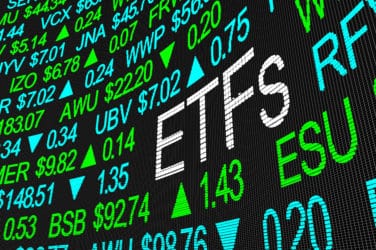(this article originally appeared on Reuters)
The top U.S. securities regulator on Thursday approved major new rules designed to protect mutual fund investors from the effects of a sudden sell-off, but it left for another day some of the dicier issues involved.
The U.S. Securities and Exchange Commission’s new rules take aim at liquidity issues of the $18 trillion traditional mutual fund market. But the agency deferred action on a separate plan to regulate the use of derivatives in funds and carved out significant exemptions for exchange-traded funds. It also put off a vote on electronically delivering funds’ written materials to investors.
The rules are part of a sweeping set of reforms that SEC Chair Mary Jo White has sought in the asset management industry, which includes the open-end fund market. On Thursday, the commission also approved increased information reporting from the funds and allowing them to use swing pricing during unstable market conditions.
White said the SEC will finish rules on how the funds use derivatives “in the near term” and is working on annual stress testing for large investment advisers, as well.
The new rules have been strengthened since they were first proposed more than a year ago, White said. They are “better tailored to the liquidity risks faced by different kinds of funds, with an improved classification scheme for the liquidity of fund investments and a more targeted approach to ETFs,” she said.
But the mutual fund and ETF industry did win some major concessions.
Under the final rules approved unanimously by the SEC’s three commissioners, funds will have to classify investments into the categories of highly liquid, moderately liquid, less liquid and illiquid.
The first draft had proposed a stricter system of categorizing investments, with six levels, or “buckets,” defining their liquidity.
“There was a lot of positive – the classification system seems much more practical and realistic,” said David Blass, general counsel for the Investment Company Institute, the funds’ trade group.
The final rules also exempt “in kind” exchange-traded funds, those that honor redemptions in securities instead of cash, from requirements on how many highly liquid and illiquid assets they can hold.
The final version still requires funds to keep on hand a certain level of assets that can be converted into cash in three days, those considered “highly liquid.” But it left the funds’ boards to decide how to rectify dips below that threshold. The original proposal had blocked funds from buying any more assets until they got back up to the minimum. ETFs had said that could run counter to their investment strategy.
In the same vein, the rules kept a requirement that no more than 15 percent of assets could be classified as illiquid, but did not prescribe a fix for passing that bar.
ETFs have faced fears that they cannot manage rampant selling. On Aug. 24, 2015, heavy demand to sell U.S. ETFs pushed many of their market prices far below the value they could have fetched if they had been redeemed by the issuer.
But ETFs operate differently from mutual funds because most individuals sell them in the public market and cannot redeem them directly with the issuers.
The rules go into effect on Dec. 1, 2018 for larger funds, and June 1, 2019 for smaller ones.






